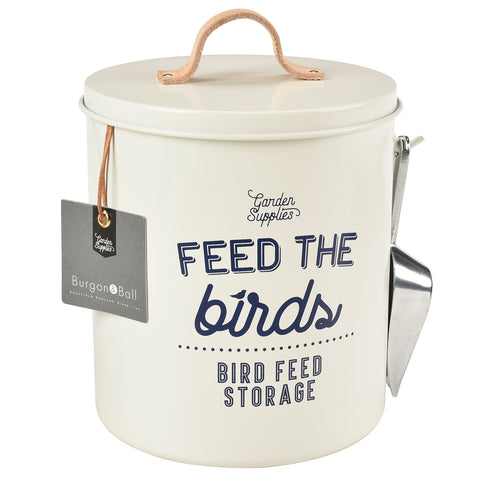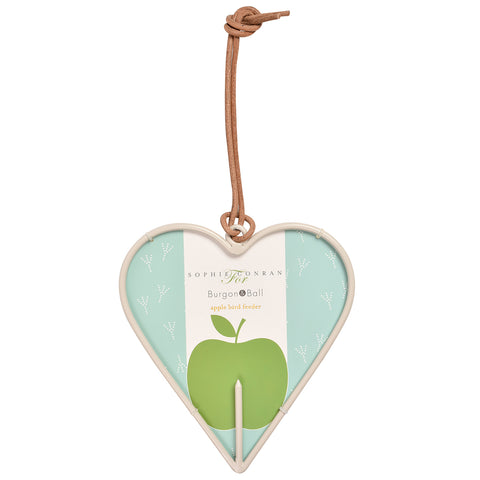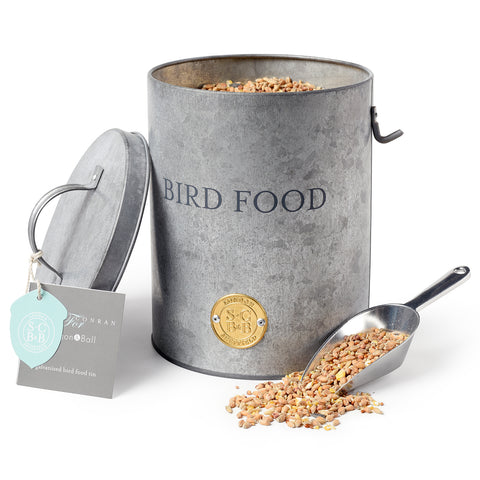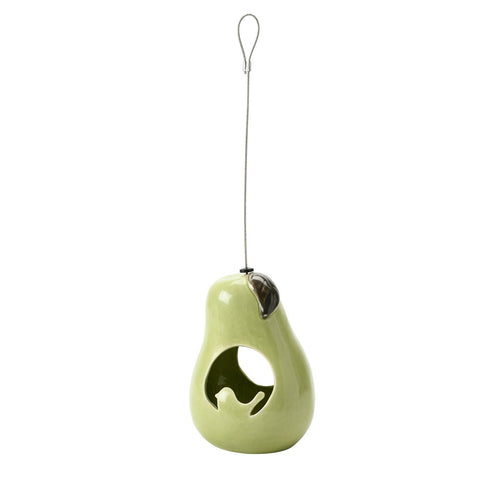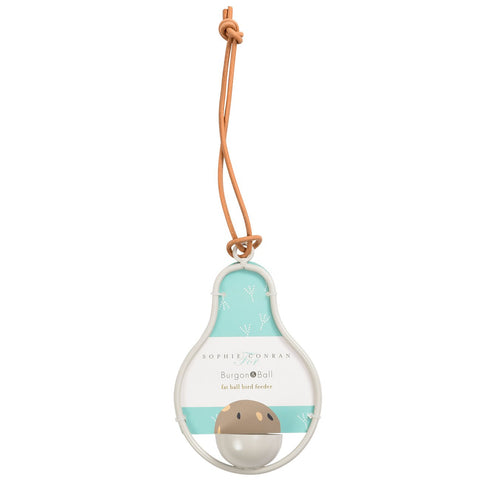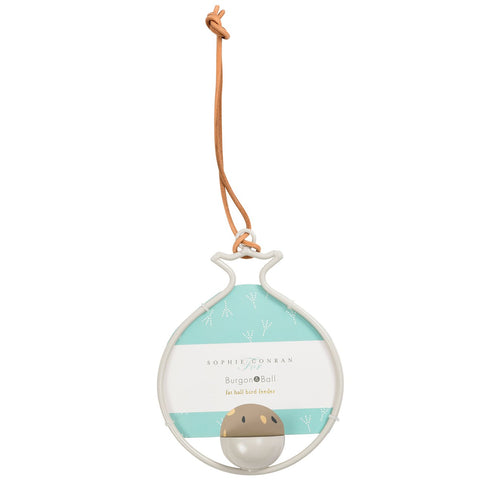Inviting wild birds to share their lives with you is a lovely way to bring colour, life and drama into your garden during the dull winter days. A helping hand during the colder months can be a real life-saver for the birds, as other food sources dry up and disappear.
Get the children (or grandchildren!) involved in looking after the wildlife on their doorstep, too. It’s a great way to fire up their love for the natural world. They’ll learn to recognise not just bird species but even individuals as well, and get to know their habits. It really can be an enchanting experience to share.
So, how to help our feathered friends? Well, like any of us, wild birds need three things to help them thrive during the dark days of winter; food, water and shelter.
Putting food on the table
There are lots of berries, hips and sloes still to be seen in gardens and hedgerows – but that’s just the start.
 A commercially-available seed mix contains the best balance of nutrients, to give your garden visitors everything they need. Mixes are available in a wide variety of feeding forms, mixes and flavours, and some are even tailored to attract different bird species to your birdtable. The better mixtures contain plenty of flaked maize, sunflower seeds, and peanut granules.
A commercially-available seed mix contains the best balance of nutrients, to give your garden visitors everything they need. Mixes are available in a wide variety of feeding forms, mixes and flavours, and some are even tailored to attract different bird species to your birdtable. The better mixtures contain plenty of flaked maize, sunflower seeds, and peanut granules.
The high fat nuts and seeds in the mixes are the most nutritious ingredients. Birds need high energy foods during the cold winter weather to maintain their fat reserves, to give extra insulation as temperatures drop. Peanuts in particular are rich in fat and attract a wide variety of species from wrens up to great spotted woodpeckers. Don’t offer salted or dry roasted peanuts, though, as the extra flavourings aren’t good for birds.
Black sunflower seeds are an excellent year-round food, and in some areas they’re even more popular than peanuts. The oil content is higher in black seeds than in striped ones, and so they are much more useful to your garden visitors as a high-energy food. The husks can be messy, though, so simply putting out the husked kernels is a useful alternative – and the birds will appreciate them just as much!
 Also, meaty tinned dog and cat food are a valuable source of protein when insects are unavailable. Blackbirds in particular seem to enjoy dog food, and will even feed it to their chicks in the spring. But no dog or cat biscuits – they can swell inside birds’ stomachs and even cause death.
Also, meaty tinned dog and cat food are a valuable source of protein when insects are unavailable. Blackbirds in particular seem to enjoy dog food, and will even feed it to their chicks in the spring. But no dog or cat biscuits – they can swell inside birds’ stomachs and even cause death.
Fruit is welcome too, especially in winter, when it’s not in season. Juicy apples, pears, plums, even a halved orange are all gratefully accepted as a flavour-filled treat.
Some gardeners choose to make up their own bird feeders, and you can find many instructions and recipes for this online. Here’s a recipe from Gardeners’ World, for example, and here’s a family-friendly recipe from the RSPB. Have fun with the kids cooking up some bird-y treats!
A word of warning, though: margarines, unsaturated fats and vegetable fats are not suitable for birds, and nor is any fat collected after cooking meat. These soft fats can easily be smeared onto the feathers, destroying the waterproofing and insulating qualities.
Water, water everywhere…

When temperatures drop, and ponds and puddles freeze over, it can be difficult for birds to find fresh water, so providing this in your garden is just as important as providing food.
Most small birds need to drink at least twice a day. Equally importantly, birds need to bathe, which is especially important in winter. Clean feathers are easier to preen – and it’s the preening which keeps feathers waterproof and allows them to fluff up for insulation when it’s cold.
Whether you choose a bird bath, a dustbin lid sunk in the ground, or a simple flowerpot saucer, make sure it’s suitable for even the smallest birds. Gently sloping sides and a stone in the middle for perching will help your garden visitors feel comfortable there. Whichever option you choose, it’s important to change the water regularly, as droppings can accumulate and can harbour disease.
If temperatures really dip, a good tip is to put a ping pong ball or squash ball into the bird bath. It will naturally be moved around by the even the lightest breeze, and will keep the water moving to avoid it freezing over. Alternatively, pop out with a kettle of warm water every morning to melt any ice that has formed. But you do need to do this regularly. Birds are creatures of habit – like most of us! – and will be used to visiting your garden to find fresh water.
Gimme shelter
 A garden which offers lot of hiding places for cold winds and predators will welcome garden birds, and you can help on this front by selecting some bird-friendly plants. Prickly shrubs such as holly and firethorn (pyracantha) offer cover where the neighbourhood cats can’t reach, as well as providing plenty of berries for food. A covering of mature ivy on a wall or fence also creates lots of hiding places.
A garden which offers lot of hiding places for cold winds and predators will welcome garden birds, and you can help on this front by selecting some bird-friendly plants. Prickly shrubs such as holly and firethorn (pyracantha) offer cover where the neighbourhood cats can’t reach, as well as providing plenty of berries for food. A covering of mature ivy on a wall or fence also creates lots of hiding places.
And don’t forget the obvious; you may imagine that nest boxes are only used in spring, but small birds may also use them for shelter in winter, too. The RSPB recommends locating your nest box to face between north and east, so that it’s shielded from both direct sunlight and the wettest winds. And don’t forget to position it out of the reach of squirrels and cats.
A word on hygiene…
Remove uneaten food very regularly, even daily, since leftover food can attract vermin. Certainly never leave uneaten food out long enough for it to sprout.
Clean and wash your bird table and hanging feeders regularly (ideally, using a 5% disinfectant solution). It’s a good idea to move feeding stations to a new area every month or so to prevent a build-up of droppings underneath. But don’t bring bird feeders into the house to clean them – do it outside, using separate utensils, and then give them a good rinse, to remove any traces of chemicals. There are also special bird-friendly cleaning products available for this task.
Of course, it’s not just during the winter months that birds appreciate a helping hand in the food stakes. As we move into spring, birds need to put on weight to prepare for the physical strains of raising a family. The need to incubate the eggs means there’s less time to spend looking for food, and then the eggs hatch and the little ones start cheeping for food… a parent’s job is never done!
So this winter, get involved in the wildlife on your doorstep. For your garden birds, your help can be a lifesaver, and you’ll be able to enjoy an avian soap opera unfolding as you watch.


